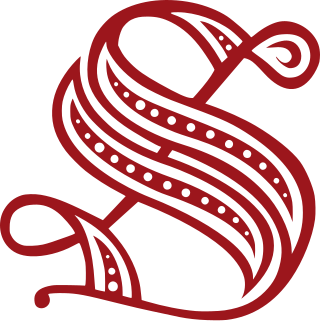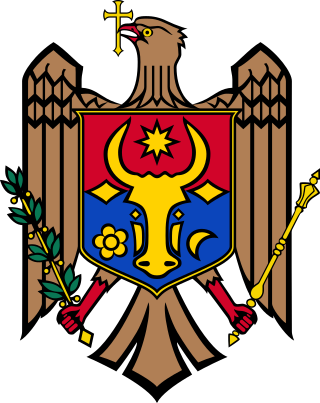Related Research Articles

The Political Constitution of the Republic of Chile of 1980 is the fundamental law in force in Chile. It was approved and promulgated under the military dictatorship headed by Augusto Pinochet, being ratified by the Chilean citizenry through a referendum on September 11, 1980, although being held under restrictions and without electoral registers. While 69% of the population was reported to have voted yes, the vote was questioned by hundreds of denunciations of irregularities and fraud. The constitutional text took effect, in a transitory regime, on March 11, 1981, and then entered into full force on March 11, 1990, with the return to electoral democracy. It was amended for the first time in 1989, and afterward in 1991, 1994, 1997, each year from 1999 to 2001, 2003, each year from 2007 to 2015, and each year from 2017 to 2021, with the last three amendments concerning the constituent process of 2020–2022. In September 2005, under Ricardo Lagos's presidency, a large amendment of the Constitution was approved by parliamentarians, removing from the text some of the less democratic dispositions coming from Pinochet's regime, such as senators-for-life and appointed senators, as well as the armed forces' warranty of the democratic regime.
Republicanism in Australia is a movement to change Australia's system of government from a constitutional monarchy to a republic; presumably, a form of parliamentary republic that would replace the monarch of Australia with a non-royal Australian head of state. It is opposed to monarchism in Australia. Republicanism was first espoused in Australia before Federation in 1901. After a period of decline following Federation, the movement again became prominent at the end of the 20th century after successive legal and socio-cultural changes loosened Australia's ties with the United Kingdom.

A popular initiative is a form of direct democracy by which a petition meeting certain hurdles can force a legal procedure on a proposition.
A constitutional amendment is a modification of the constitution of a polity, organization or other type of entity. Amendments are often interwoven into the relevant sections of an existing constitution, directly altering the text. Conversely, they can be appended to the constitution as supplemental additions, thus changing the frame of government without altering the existing text of the document.
Constitutional conventions in Australia are significant meetings that have debated the Australian Constitution. The first two gatherings debated Federation and what form of Constitution to adopt, while the following conventions debated amendments to the document.
A supermajority is a requirement for a proposal to gain a specified level of support which is greater than the threshold of one-half used for a simple majority. Supermajority rules in a democracy can help to prevent a majority from eroding fundamental rights of a minority, but can also hamper efforts to respond to problems and encourage corrupt compromises at times when action is taken. Changes to constitutions, especially those with entrenched clauses, commonly require supermajority support in a legislature. Parliamentary procedure requires that any action of a deliberative assembly that may alter the rights of a minority have a supermajority requirement, such as a two-thirds vote. In consensus democracy the supermajority rule is applied in most cases.
In Australia, referendums are public votes held on important issues where the electorate may approve or reject a certain proposal. In contemporary usage, polls conducted on non-constitutional issues are known as plebiscites, with the term referendum being reserved solely for votes on constitutional changes, which is legally required to make a change to the Constitution of Australia.

The Australian republic referendum held on 6 November 1999 was a two-question referendum to amend the Constitution of Australia. The first question asked whether Australia should become a republic, under a bi-partisan appointment model where the president would be appointed by the federal parliament with a two-thirds majority. This was the model that was endorsed by the Constitutional Convention, held in Canberra in February 1998. The second question, generally deemed to be far less important politically, asked whether Australia should alter the Constitution to insert a preamble.
The 1977 Referendums question was a successful amendment to the Australian constitution that allowed Australians living in territories to vote on future referendums. This question was put to voters alongside four others during 1977. With the success of the vote, the Constitution Alteration (Referendums) Bill 1977 passed. In future referendums, the votes of electors in the territories would be counted towards the national total, but would not be counted toward any state total.

The Italian Parliament is the national parliament of the Italian Republic. It is the representative body of Italian citizens and is the successor to the Parliament of the Kingdom of Sardinia (1848–1861), the Parliament of the Kingdom of Italy (1861–1943), the transitional National Council (1945–1946) and the Constituent Assembly (1946–1948). It is a bicameral legislature with 600 elected members and a small number of unelected members. The Italian Parliament is composed of the Chamber of Deputies, as well as the Senate of the Republic.

Australians for Constitutional Monarchy (ACM) is a group that aims to preserve Australia's current constitutional monarchy, with Charles III as King of Australia. The group states that it is a non-partisan, not-for-profit organisation whose role is "To preserve, to protect and to defend our heritage: the Australian constitutional system, the role of the Crown in it and our Flag".
The Bi-partisan appointment republican model was a proposal for Australian constitutional reform. If approved at referendum, the model would have established Australia as a republic with a Head of State appointed by the Australian Federal Parliament. The model was put to the people at the November 1999 republican referendum and was defeated by 54.4% of voters.
A direct election republican model is a proposal for Australian constitutional reform. If a proposal of this type were approved at a referendum, it would establish Australia as a republic with a head of state chosen directly by the Australian electorate.

The Virginia Conventions were assemblies of delegates elected for the purpose of establishing constitutions of fundamental law for the Commonwealth of Virginia superior to General Assembly legislation. Their constitutions and subsequent amendments span four centuries across the territory of modern-day Virginia, West Virginia and Kentucky.

A nationwide referendum was held in Moldova on 5 September 2010 on whether or not the country should amend the Constitution of Moldova to return to direct popular election of the president. Since 2001, the president had been indirectly elected by Parliament, with a supermajority of 61 seats required for election. The voters are asked to answer the following question: "Would you agree with the Constitutional amendment, which would allow the election of the President of the Republic of Moldova by the entire population?" Voters chose one of the proposed options: "Yes (for)" or "No (against)". Of those who had cast their vote, 87.83% chose "Yes". However, the referendum did not pass because only 30.29% of voters turned out, short of the necessary 33% for the referendum to be considered valid.

The Constitution of Samoa is a written constitution which is the supreme law in Samoa. It establishes Samoa as a parliamentary republic with a Westminster system and responsible government. It outlines the structure and powers of the Samoan government's three parts: the executive, legislature, and judiciary.

The 1998 Australian Constitutional Convention, also known as the Con Con, was a constitutional convention which gathered at Old Parliament House, Canberra from 2 to 13 February 1998. It was called by the Howard government to discuss whether Australia should become a republic and if so, under which constitutional model. The Convention concluded that:
A referendum is a direct vote in which an entire electorate is asked to either accept or reject a particular proposal. This article summarises referendum laws and practice in various countries.

The Aboriginal and Torres Strait Islander Voice, also known as the Indigenous Voice to Parliament, the First Nations Voice or simply the Voice, was a proposed Australian federal advisory body to comprise Aboriginal and Torres Strait Islander people, intended to represent the views of Indigenous communities. The Voice as proposed by the Albanese government would have had the power to make representations to the Parliament of Australia and executive government on matters relating to Indigenous Australians. The specific form of the Voice was to be determined by legislation passed by Parliament had the referendum succeeded.
Referendums in the Philippines are occasionally held at a national, regional or local level. Referendums can either by national or local in scope. In the Philippines, "referendums" and "plebiscites" mean different things.
References
- ↑ "Issues Deliberation Australia". Archived from the original on 13 September 2005. Retrieved 27 January 2006.
- ↑ "From Constitutional Convention to Republic Referendum: A Guide to the Processes, the Issues and the Participants (Research Paper 25 1998-99)". Archived from the original on 6 February 2010. Retrieved 30 January 2010.
- ↑ "Australian Republican Movement - Speeches & Articles - Nicola Roxon 19-06-04, "Speech to Victorian ARM Conference"". Archived from the original on 2 December 2008. Retrieved 16 February 2022.
- ↑ "Archived copy" (PDF). Archived from the original (PDF) on 18 January 2006. Retrieved 27 January 2006.
{{cite web}}: CS1 maint: archived copy as title (link) - 1 2 3 "Archived copy" (PDF). Archived from the original (PDF) on 18 January 2006. Retrieved 27 January 2006.
{{cite web}}: CS1 maint: archived copy as title (link) - ↑ "Australians for Constitutional Monarchy – No Republic!".
- ↑ "Archived copy" (PDF). Archived from the original (PDF) on 27 August 2005. Retrieved 27 January 2006.
{{cite web}}: CS1 maint: archived copy as title (link) - ↑ "Archived copy" (PDF). Archived from the original (PDF) on 4 February 2012. Retrieved 29 July 2008.
{{cite web}}: CS1 maint: archived copy as title (link) - ↑ "Constitutional Referenda in Australia (Research Paper 2 1999-2000)". www.aph.gov.au. Archived from the original on 7 February 2012.
- ↑ "Parliament of Australia: Senate: Constitution - Chapter 8". Archived from the original on 10 March 2006. Retrieved 14 February 2006.
- ↑ "Federation Week: An Australian mosaic". Archived from the original on 21 September 2006. Retrieved 30 November 2006.
- ↑ "Constitutional Convention Hansard" (PDF). Parliament of Australia. 2 February 1998. Archived from the original (PDF) on 8 January 2011.
- 1 2 "Australian Republican Movement". Archived from the original on 22 July 2008. Retrieved 16 February 2022.
- ↑ "Insight - MEET MARK LATHAM". Archived from the original on 7 January 2006. Retrieved 28 January 2006.
- ↑ "Unions won't rule us: Rudd". The Sydney Morning Herald. 27 April 2007.
- ↑ "Australian Republican Movement Policy". February 2010. Archived from the original on 18 February 2011. Retrieved 15 February 2011.